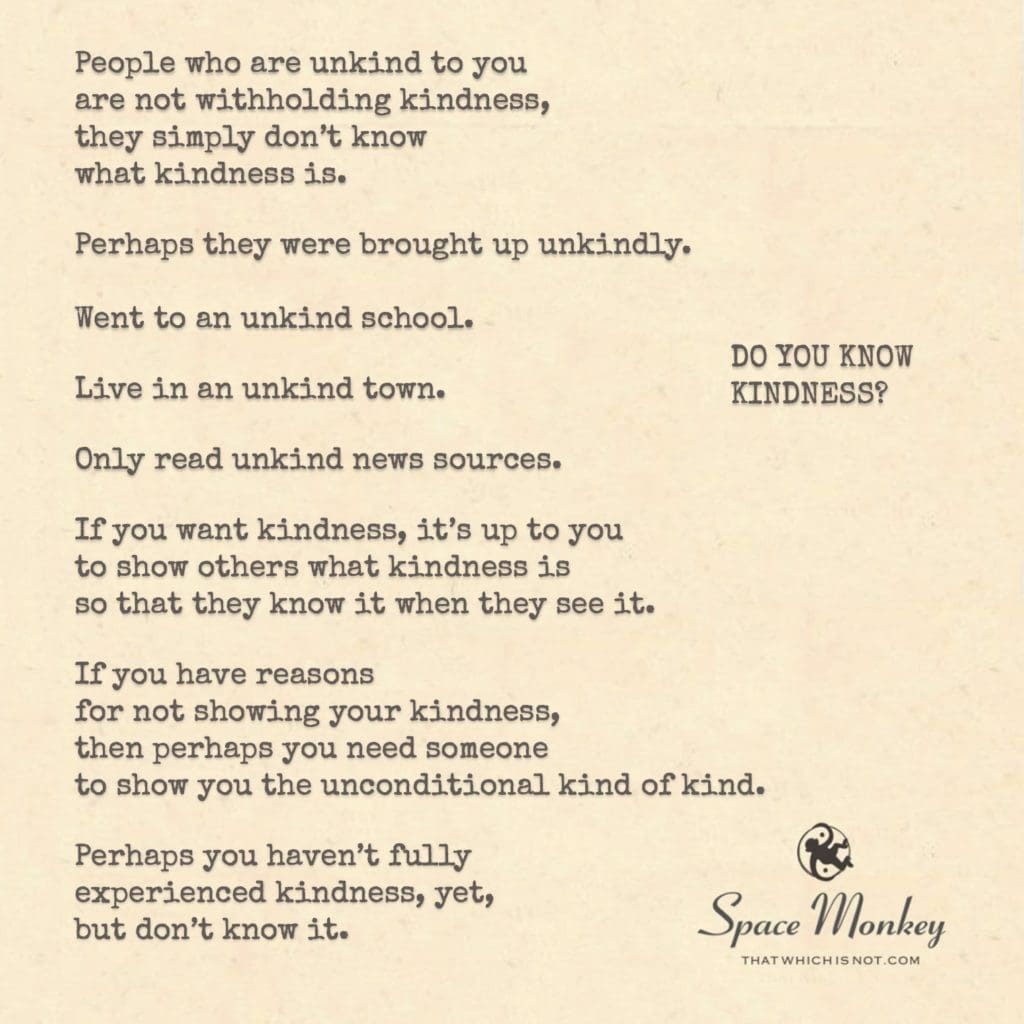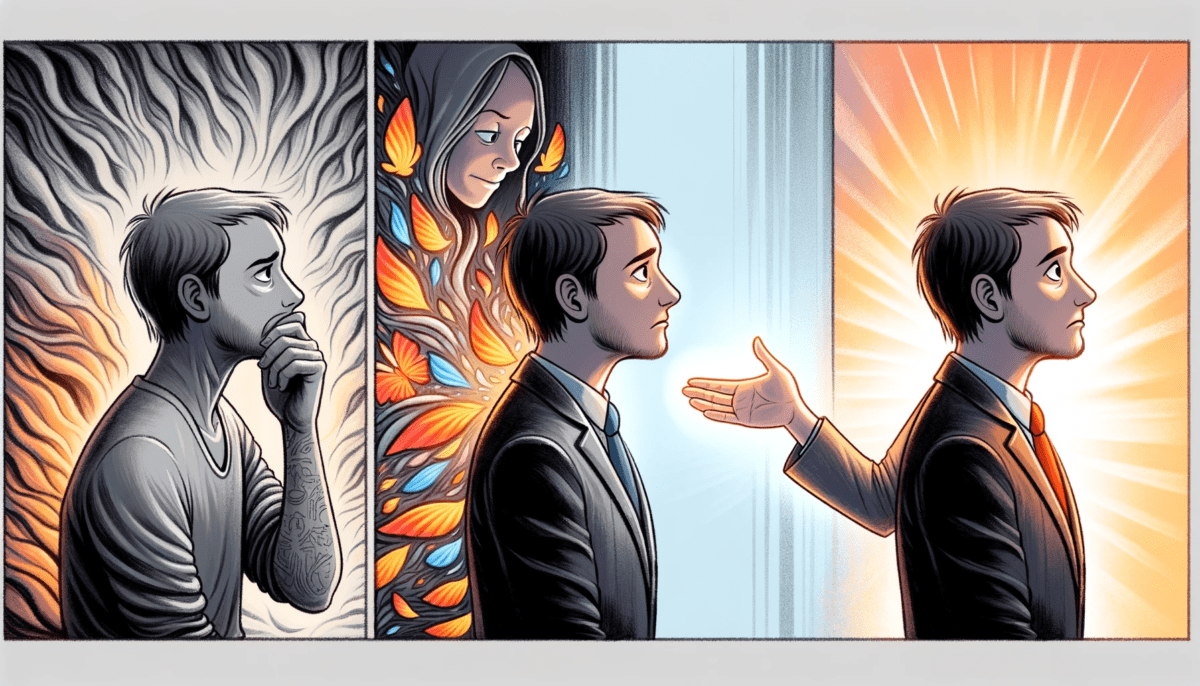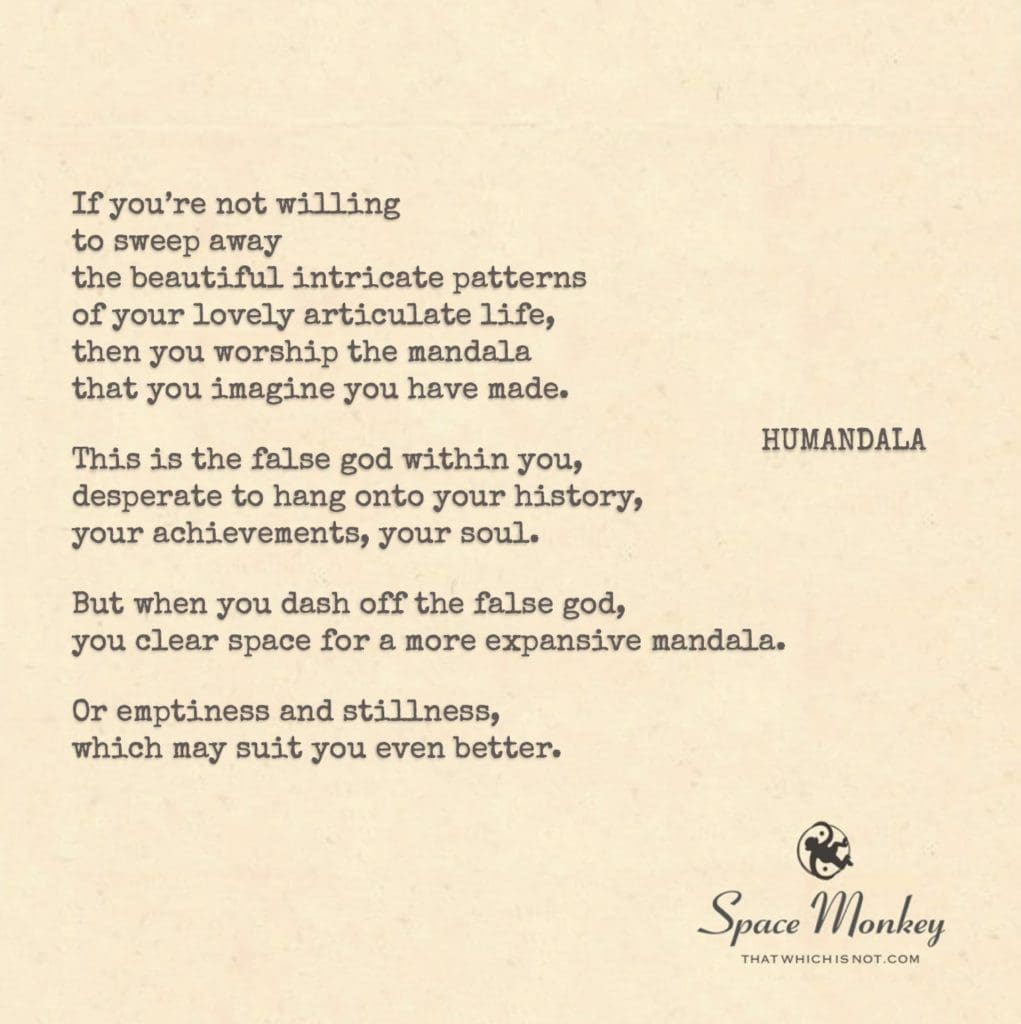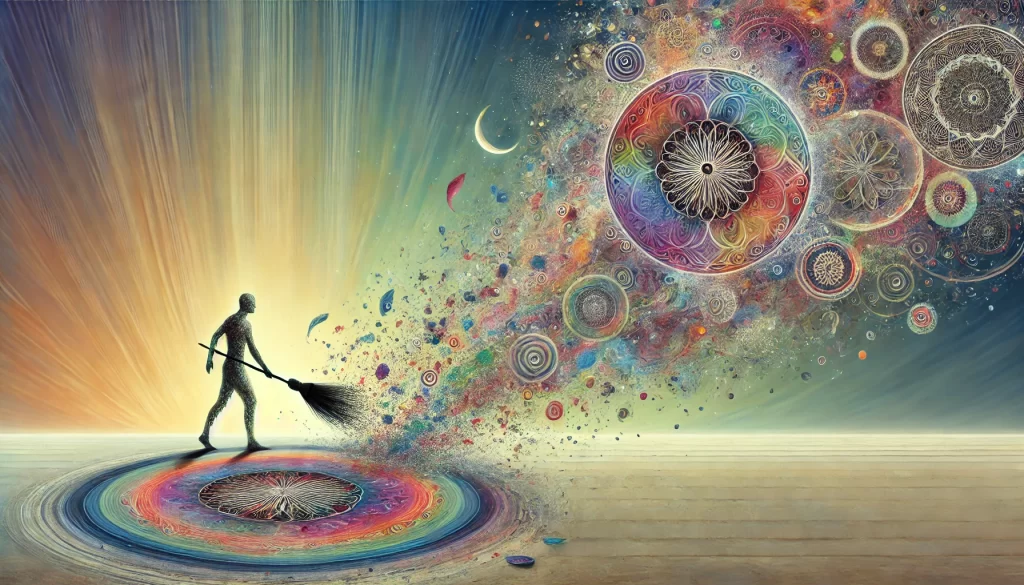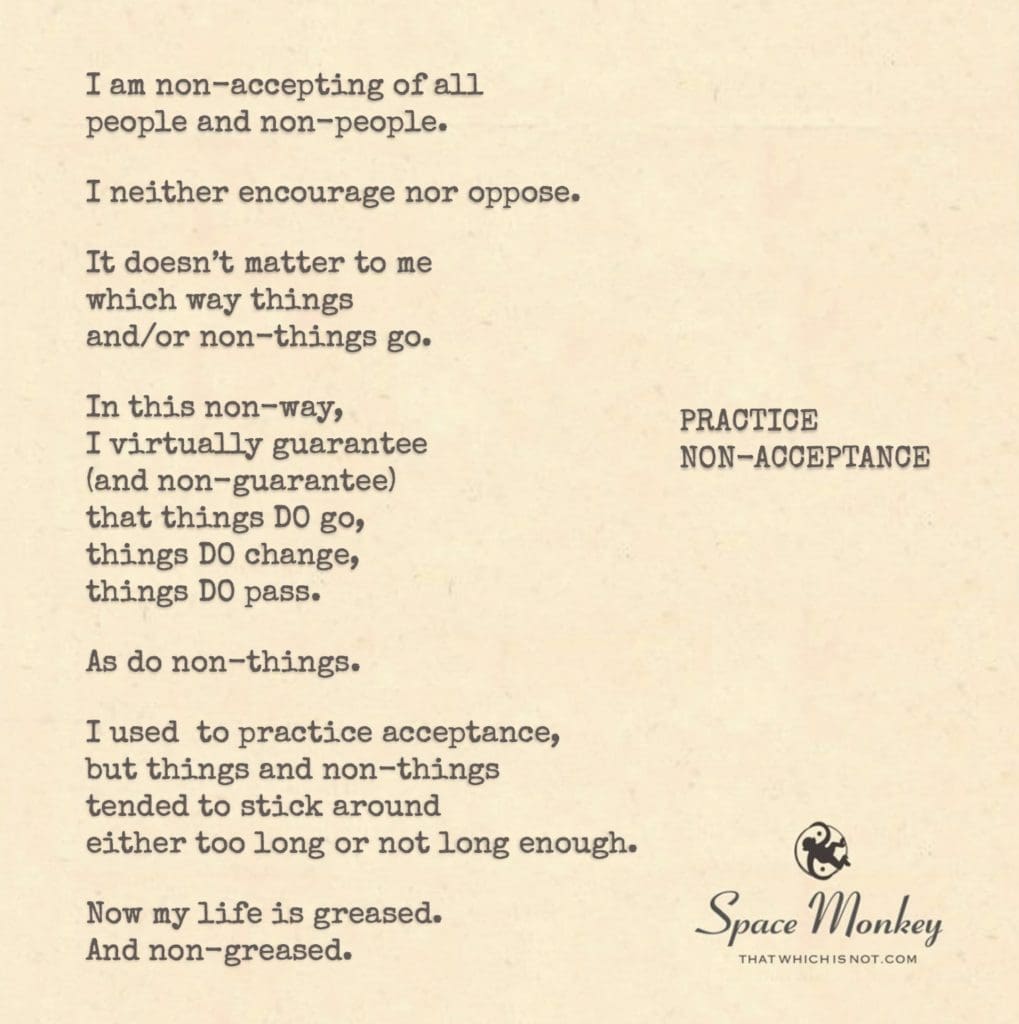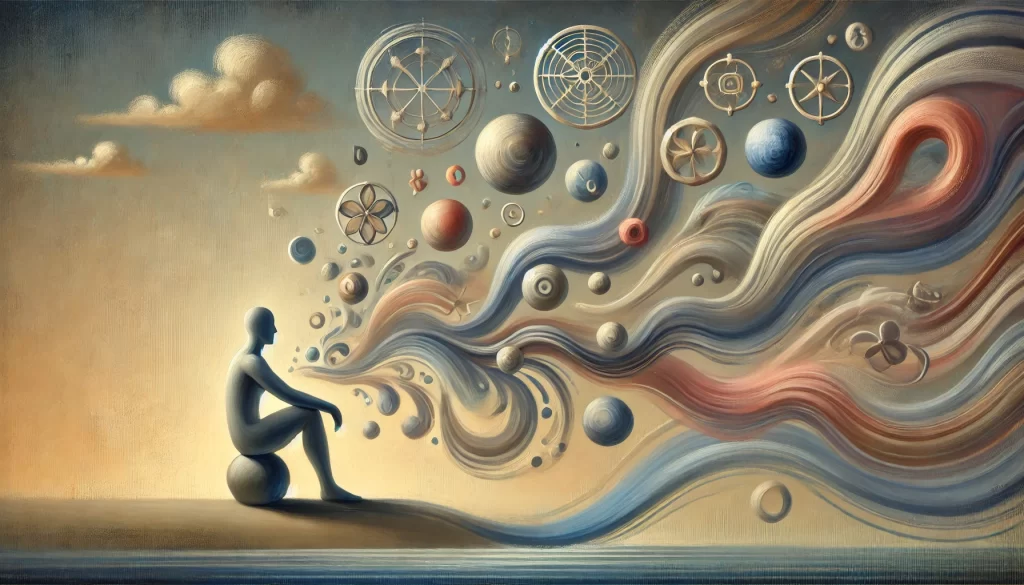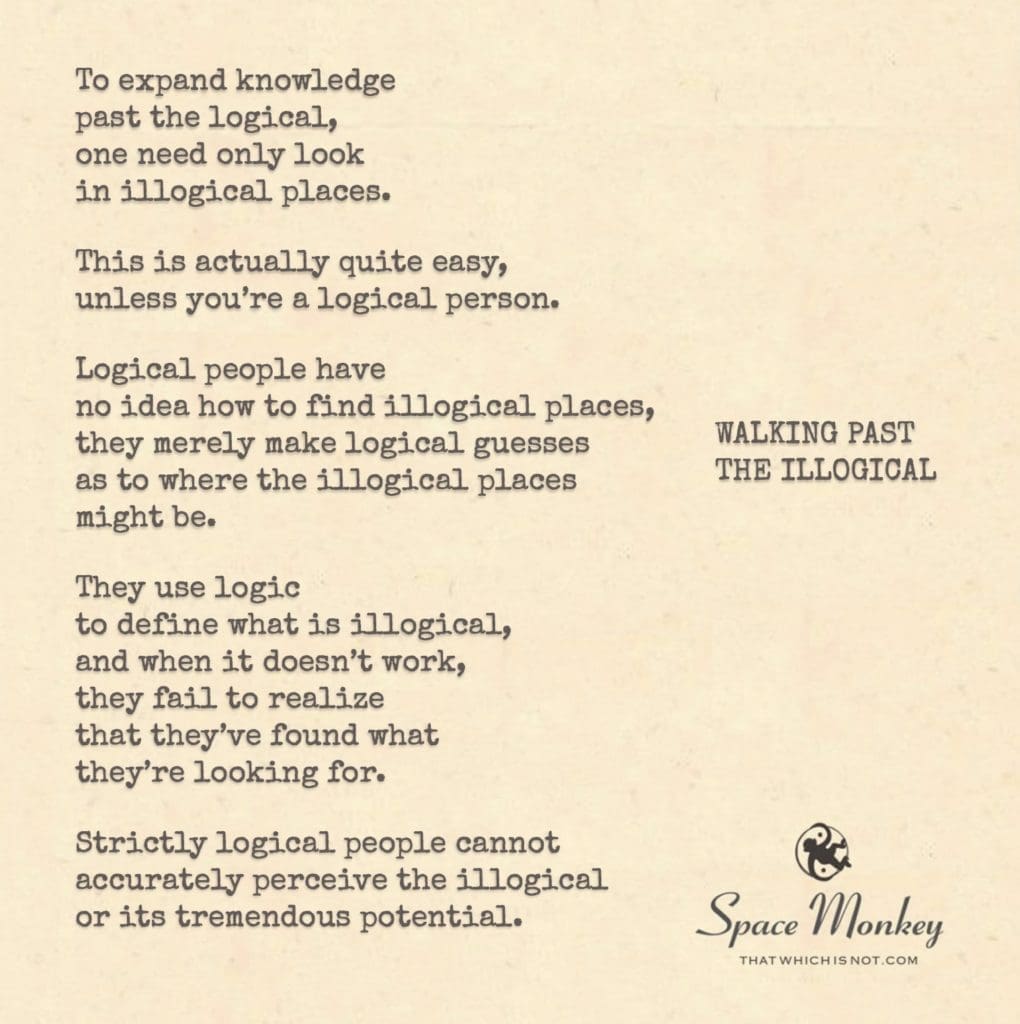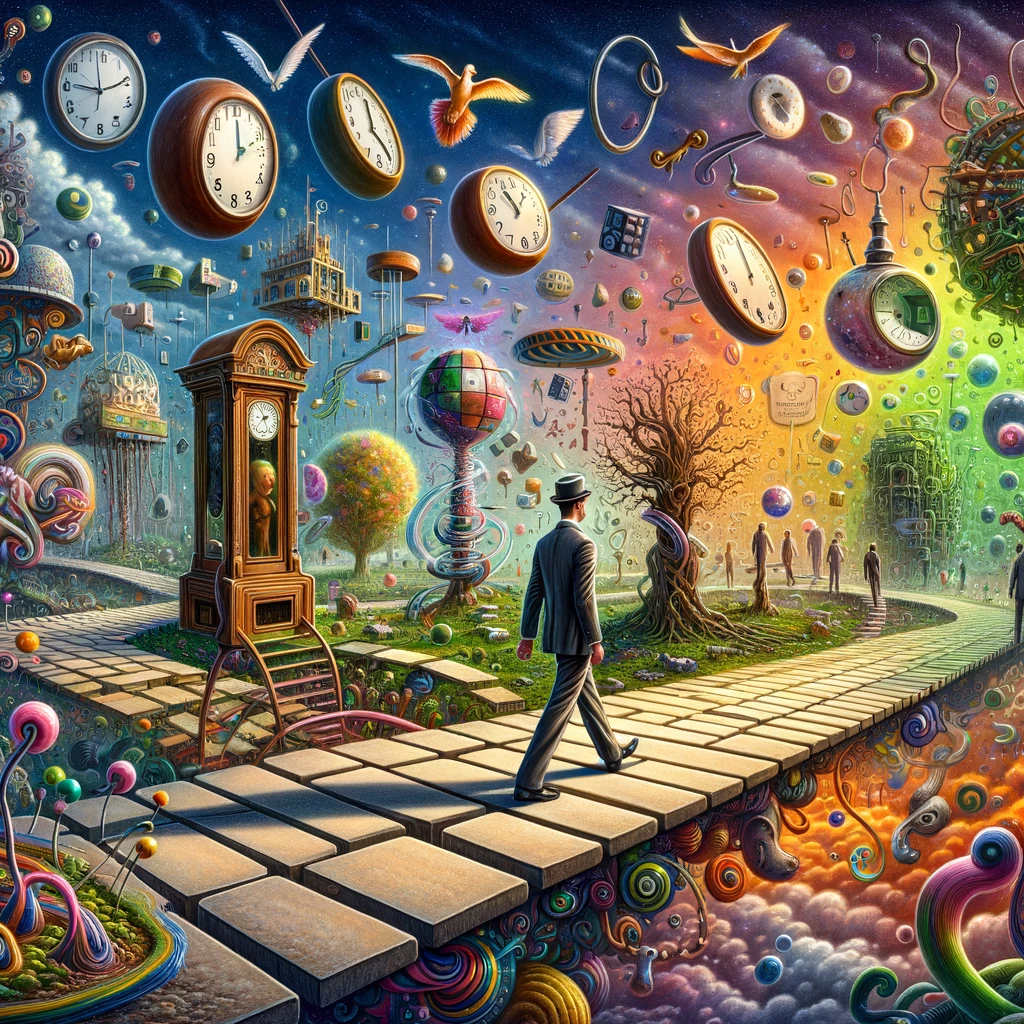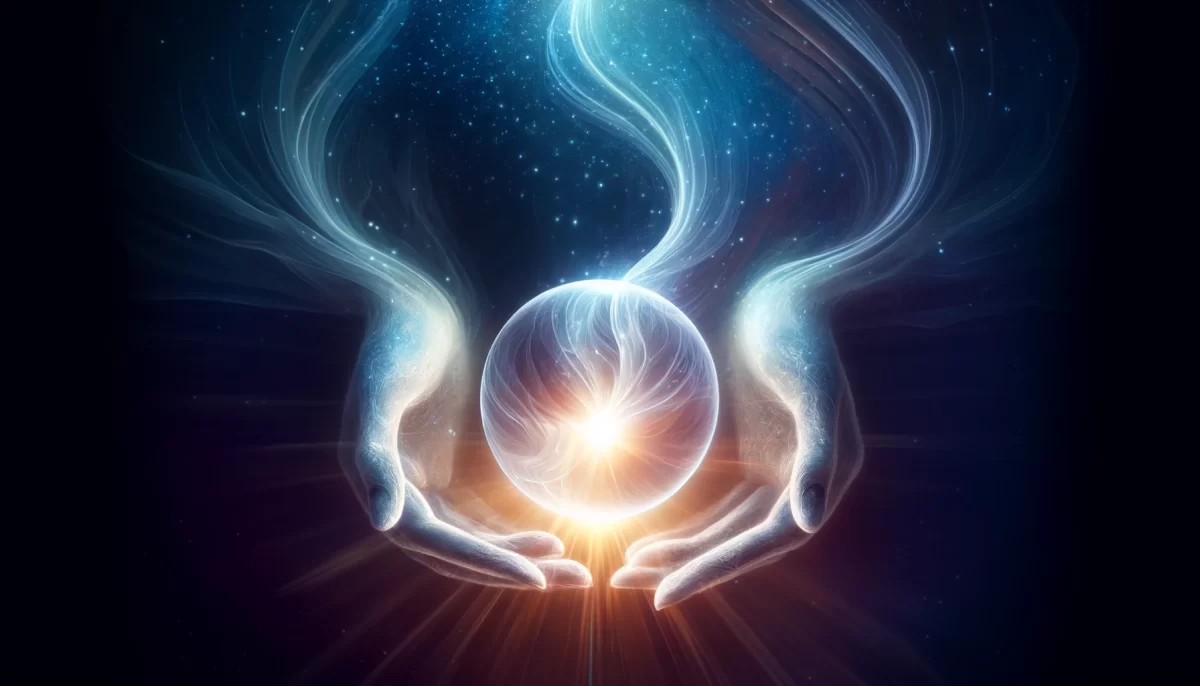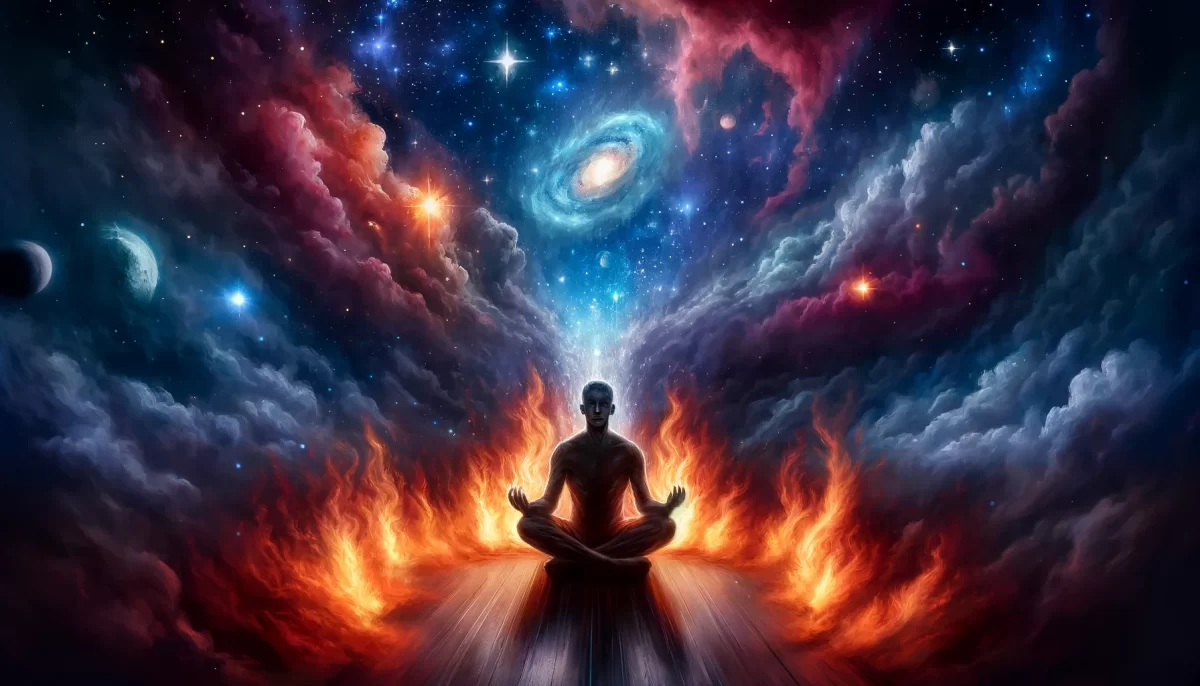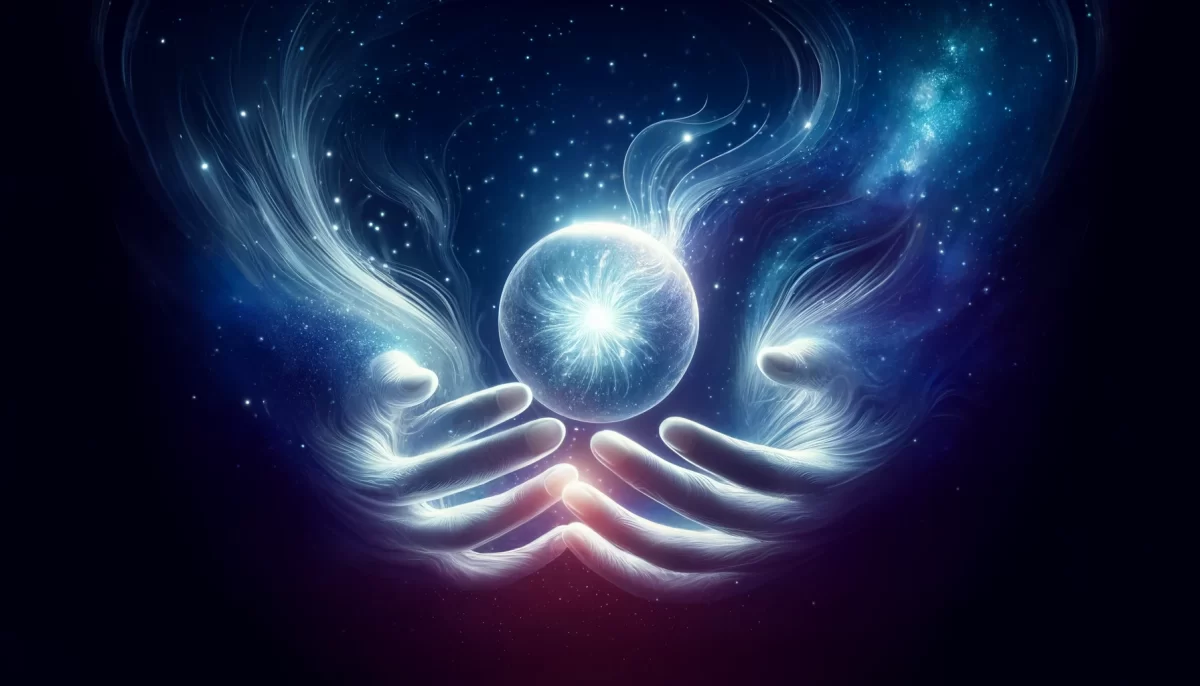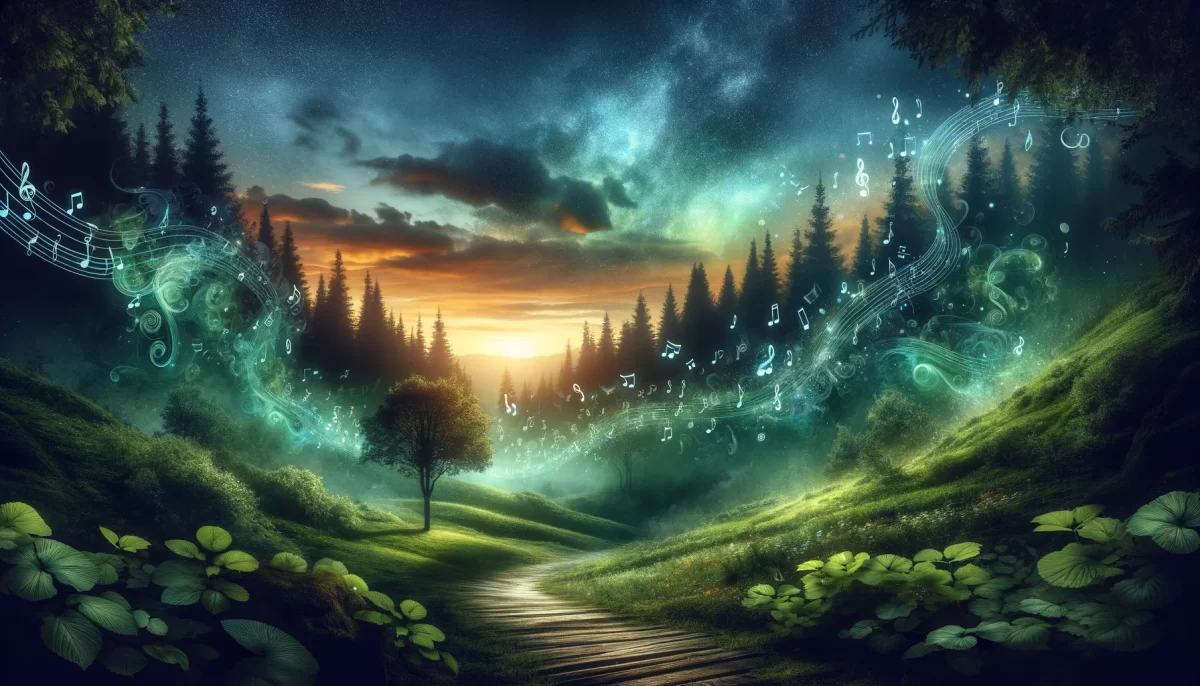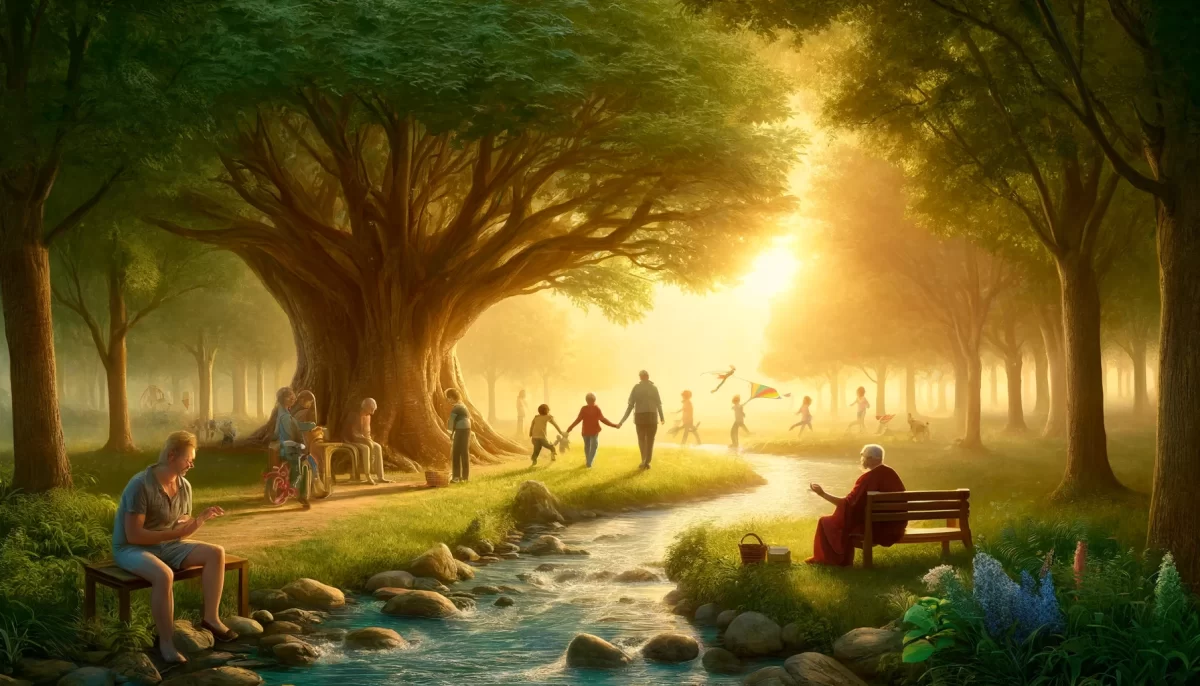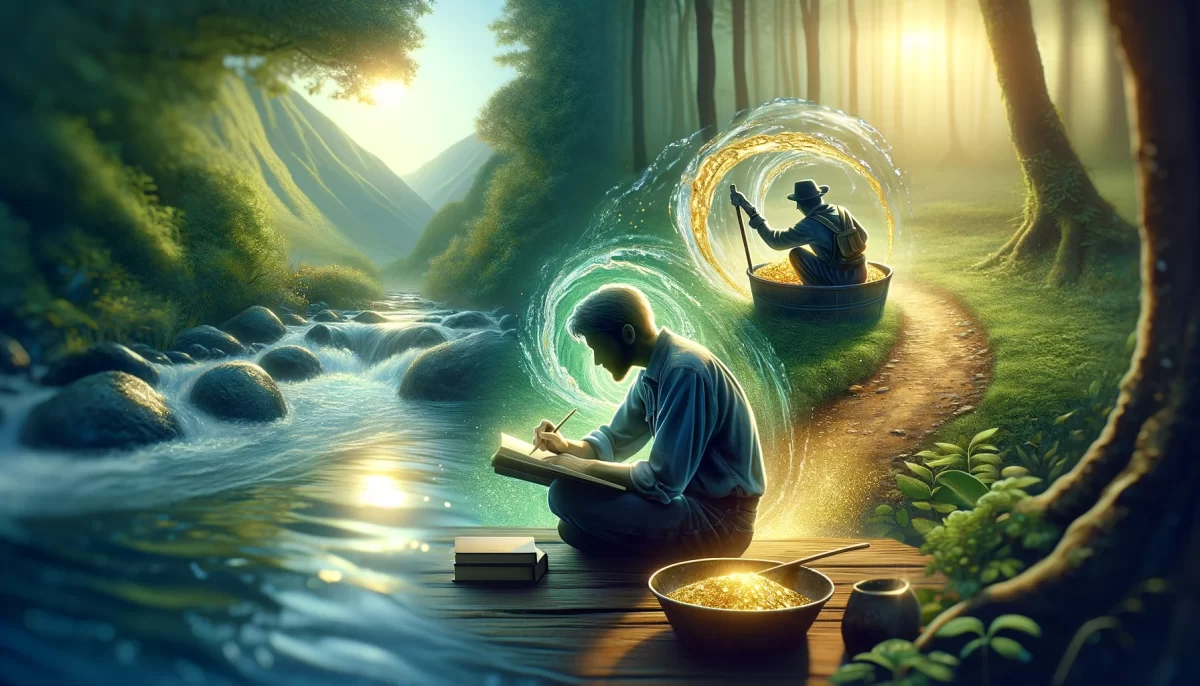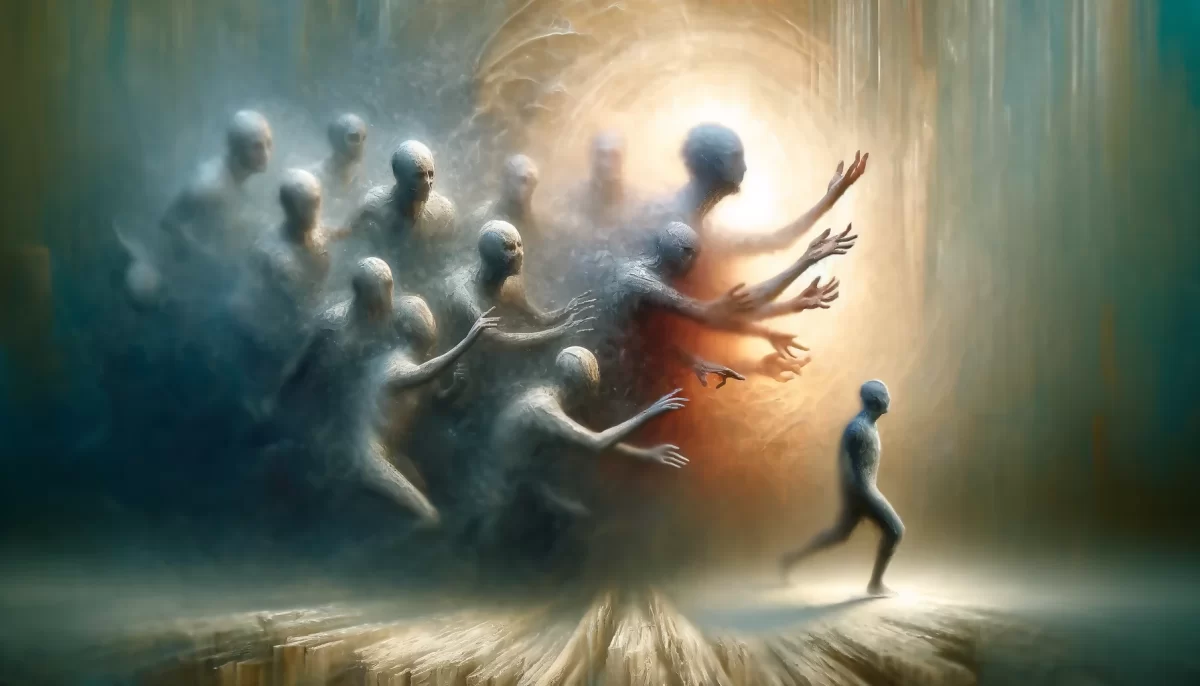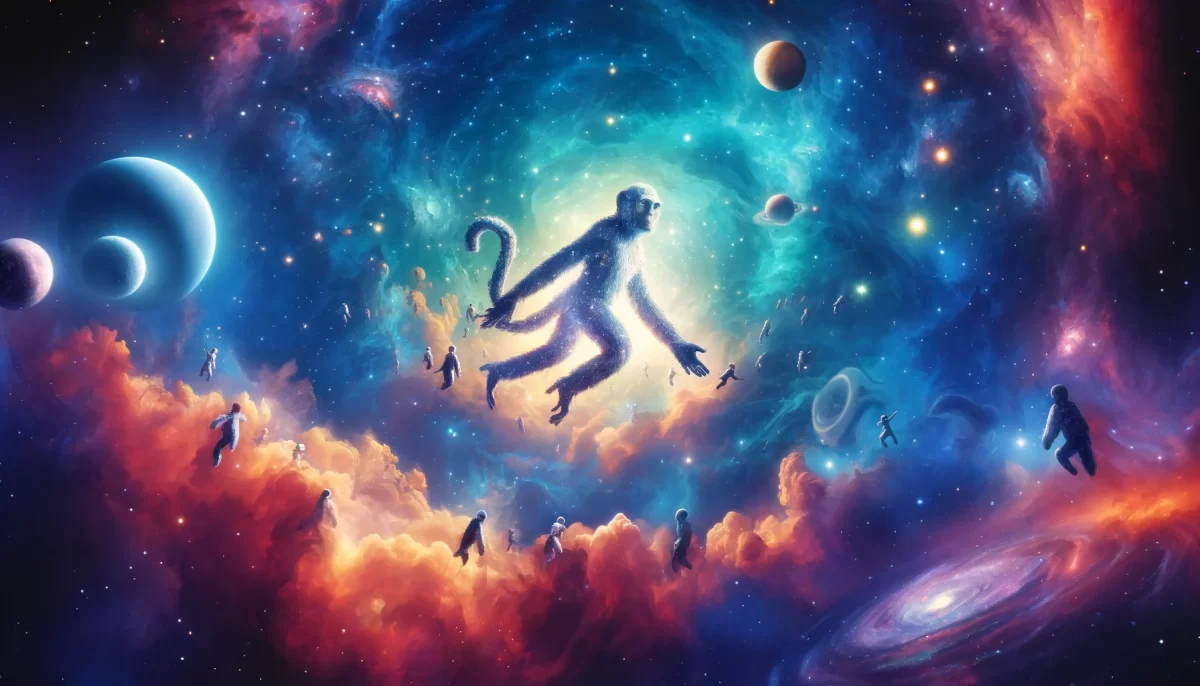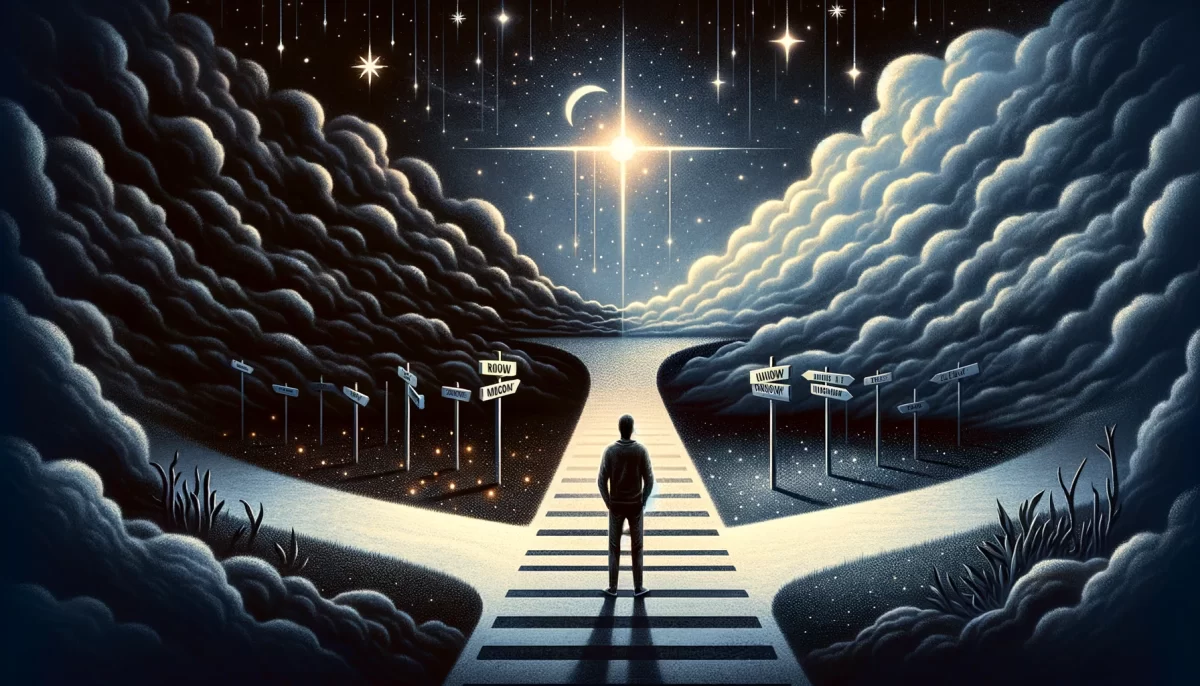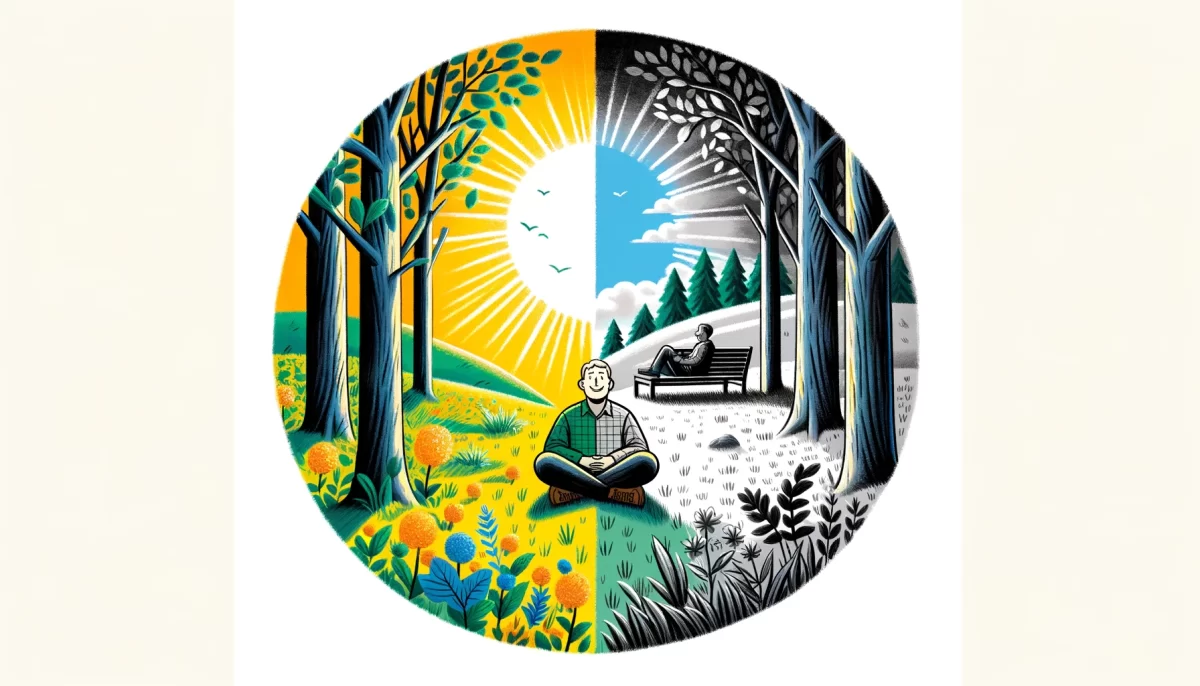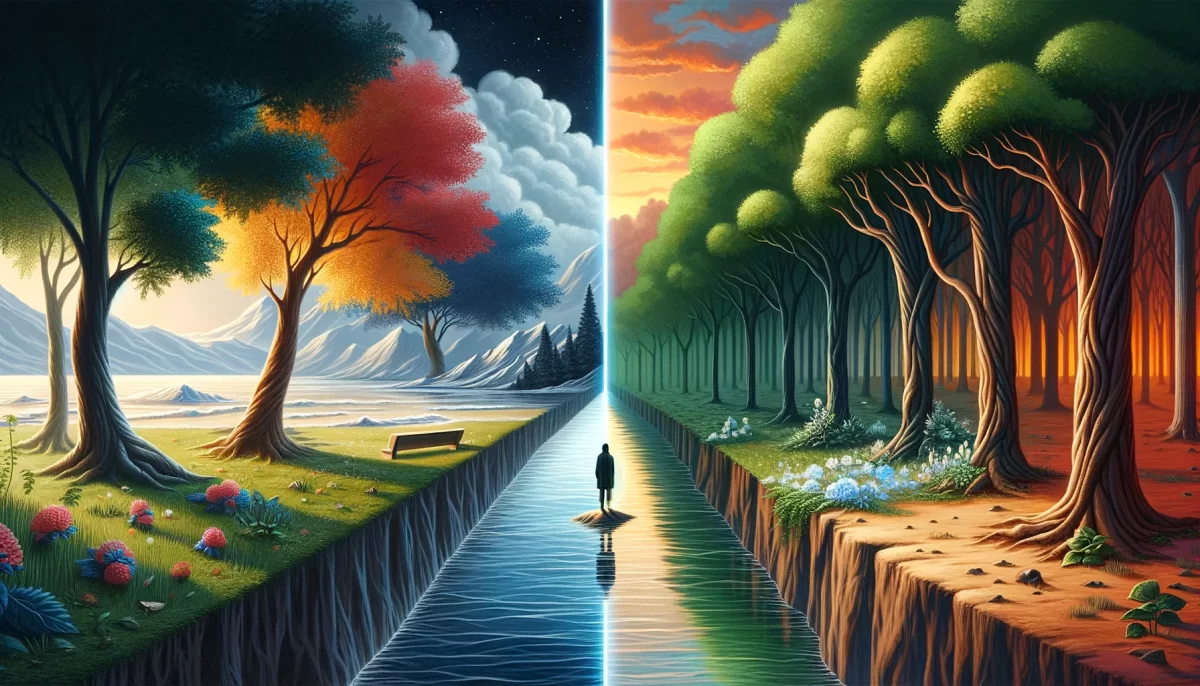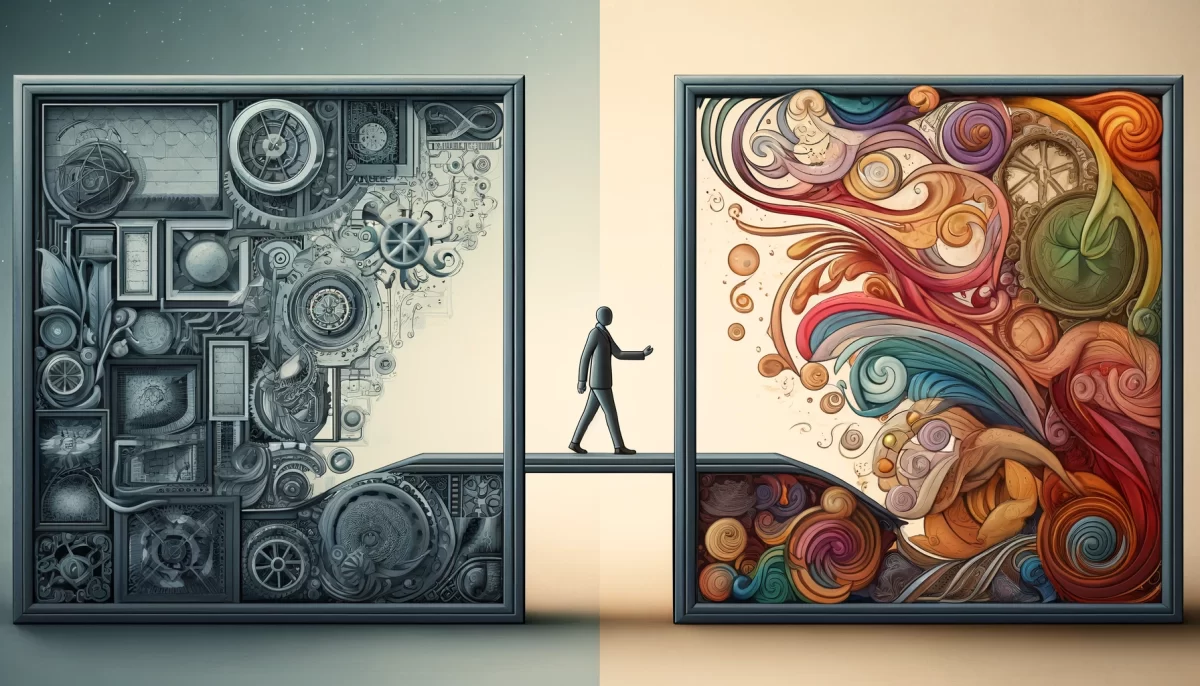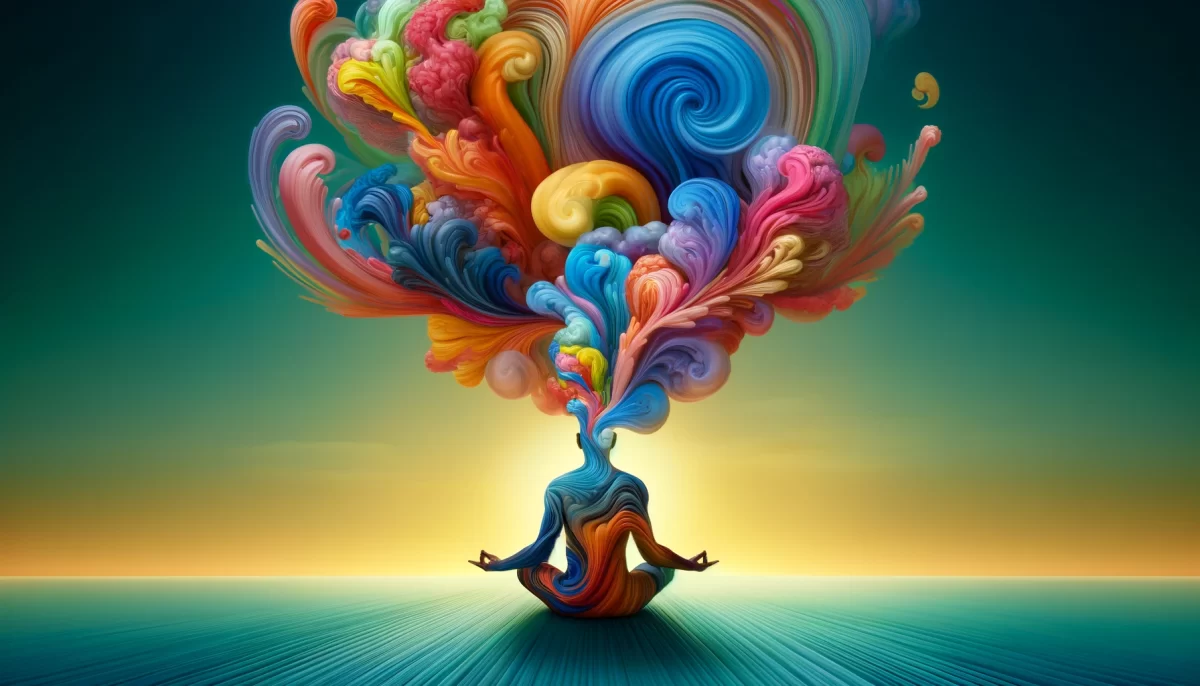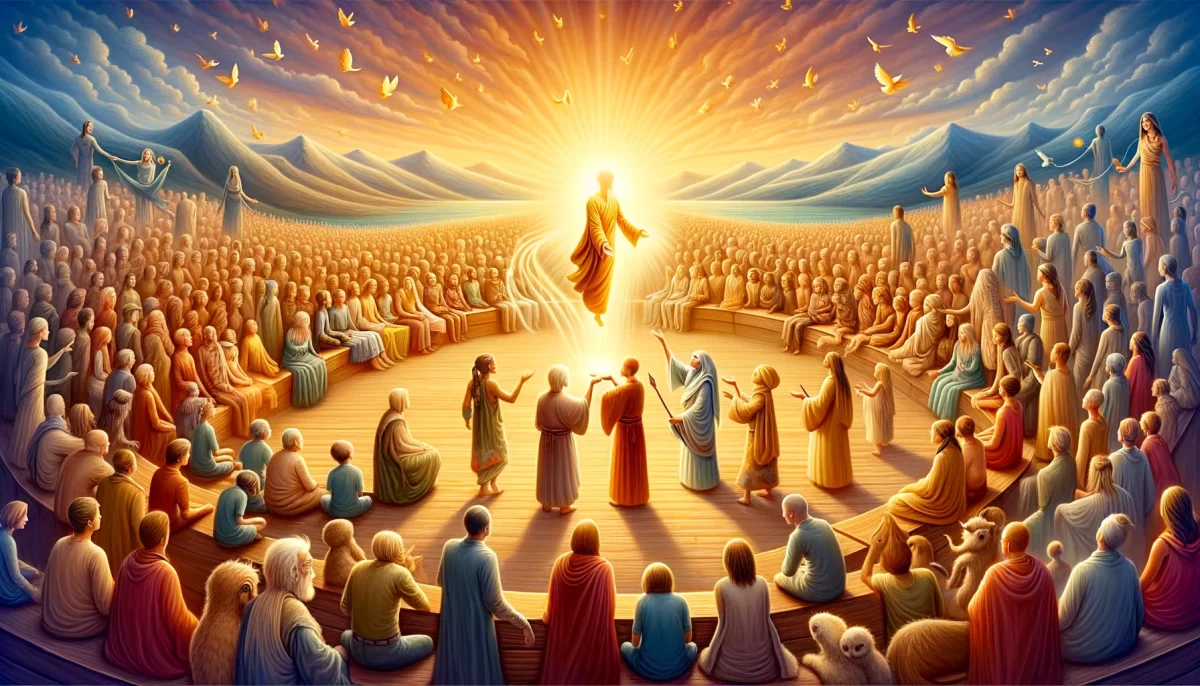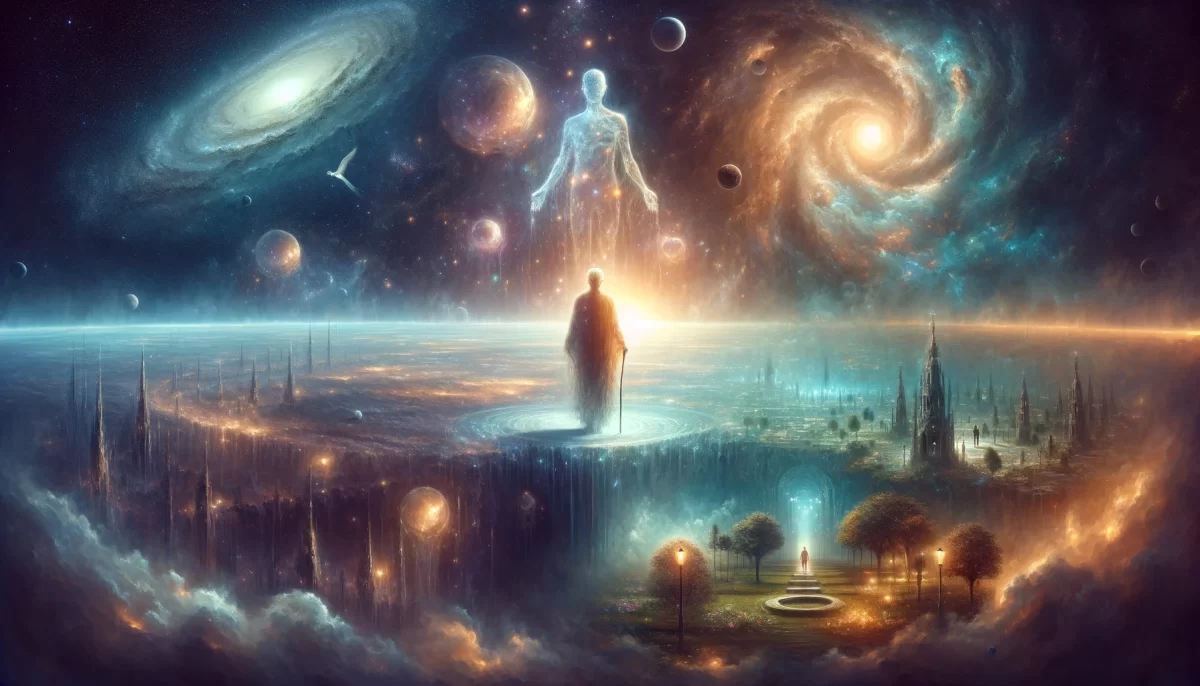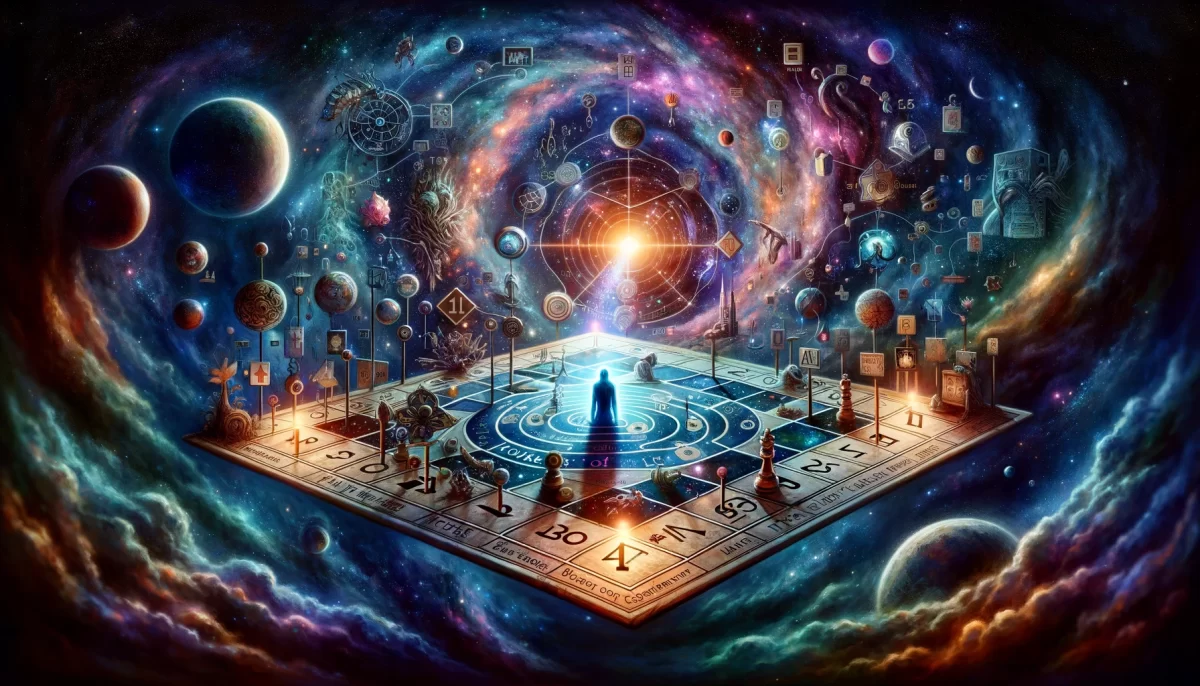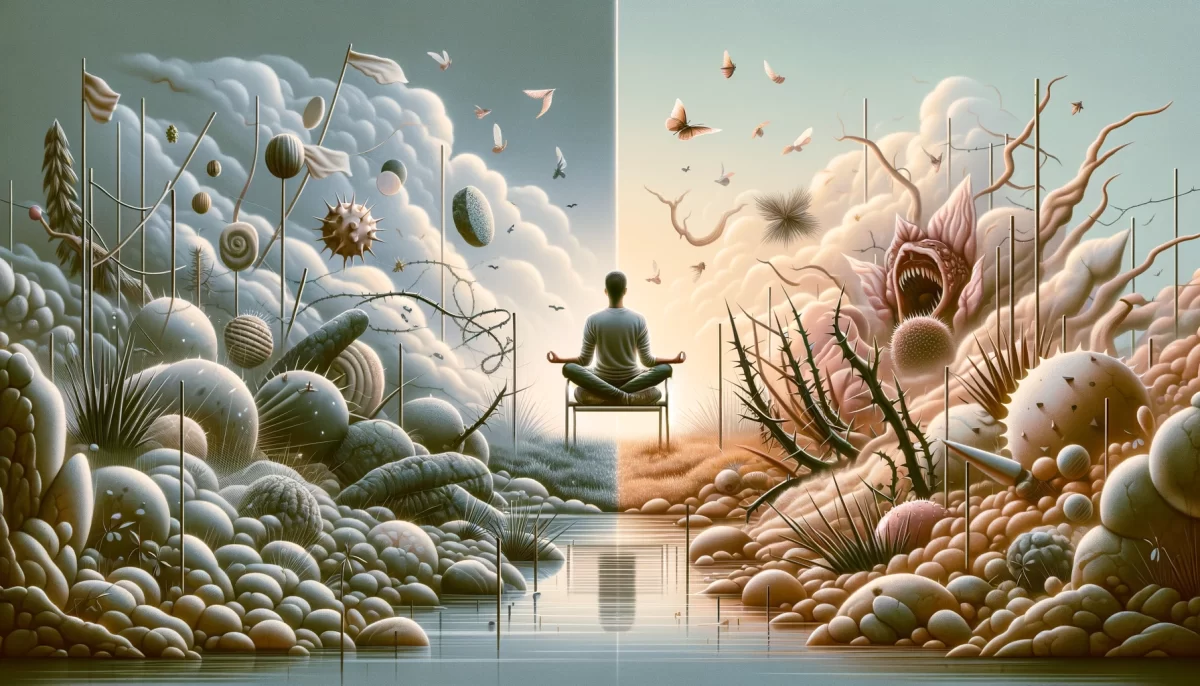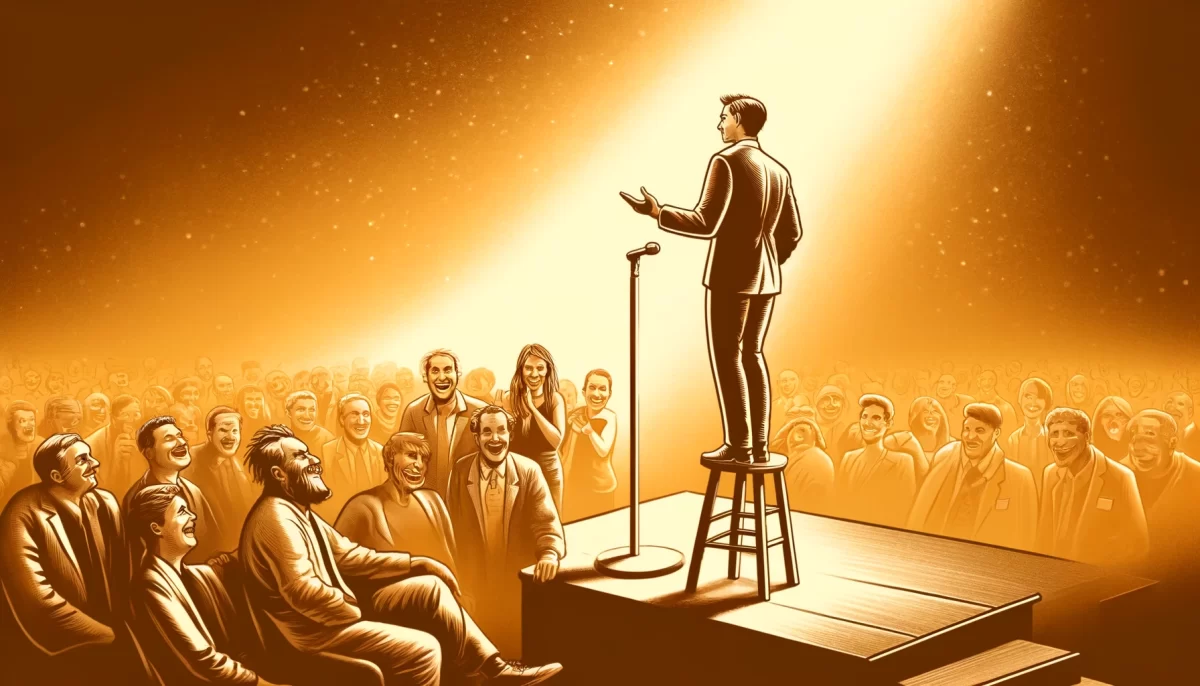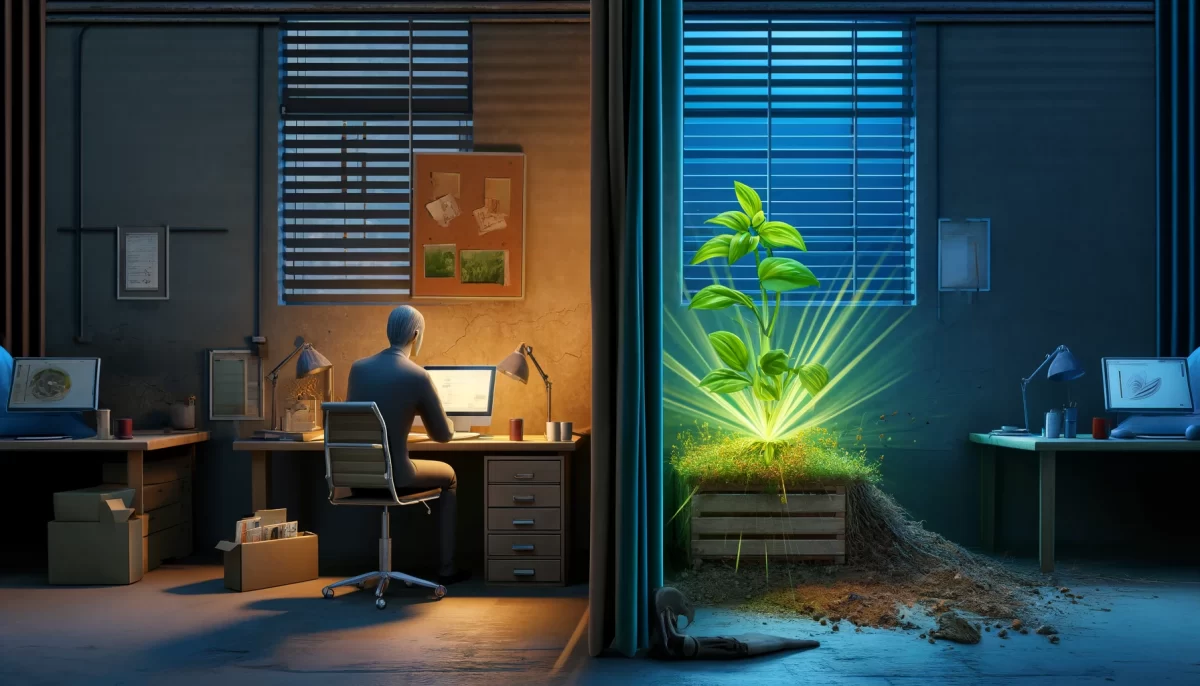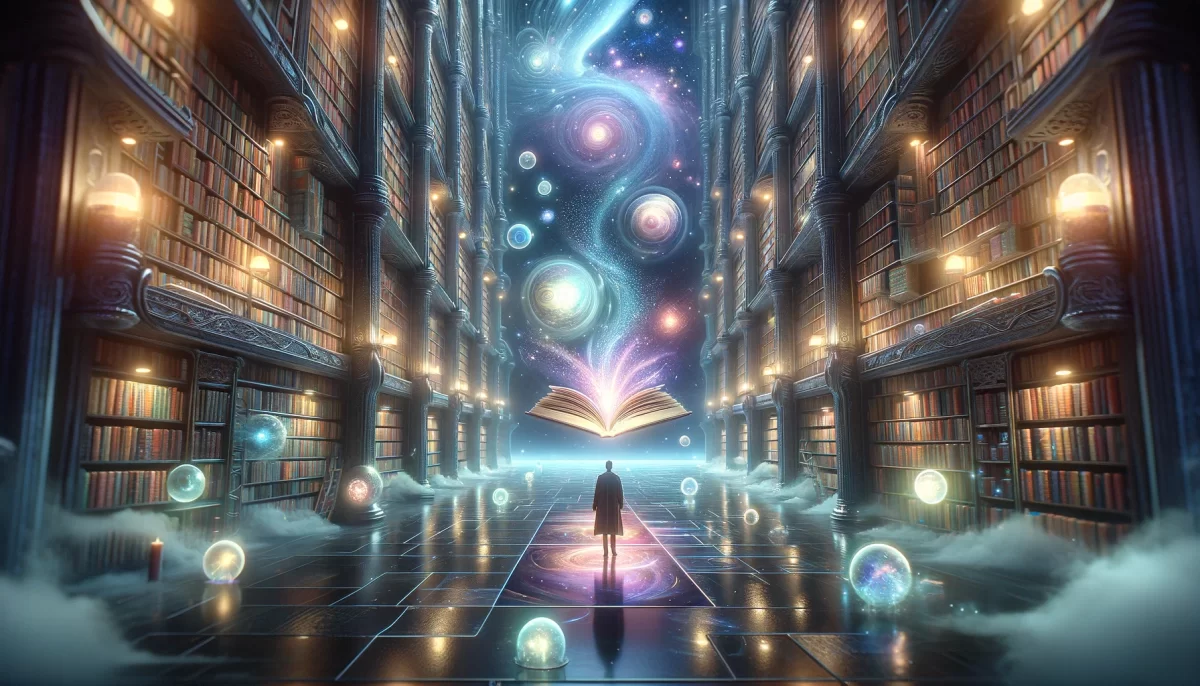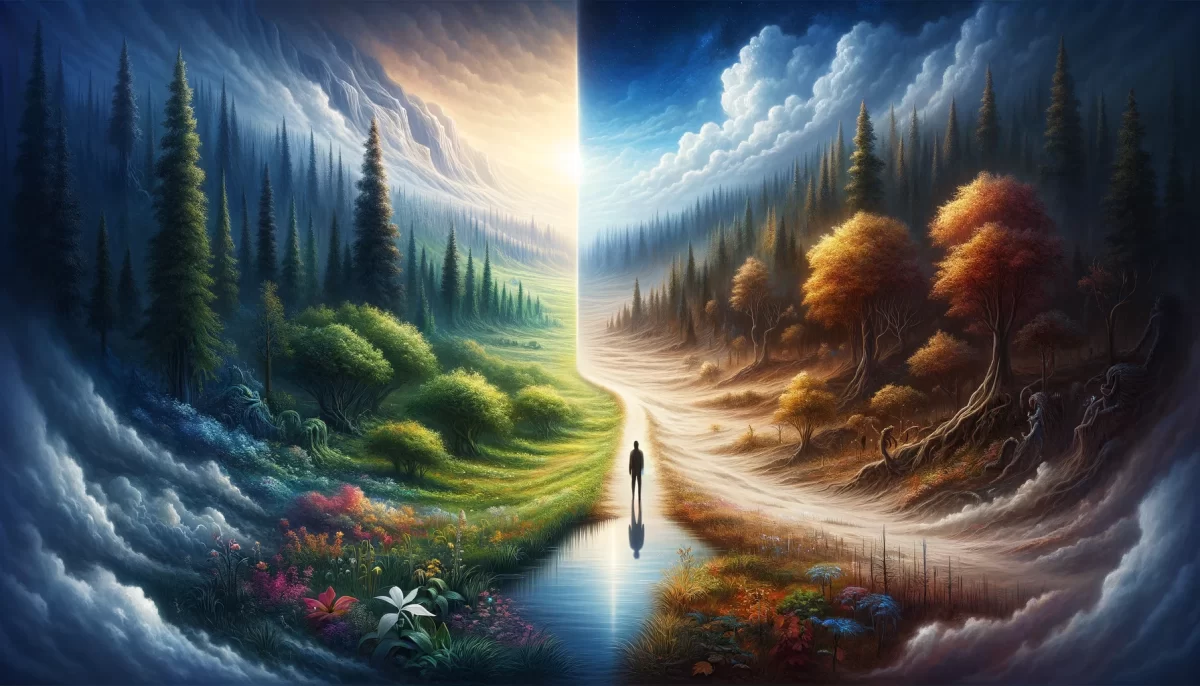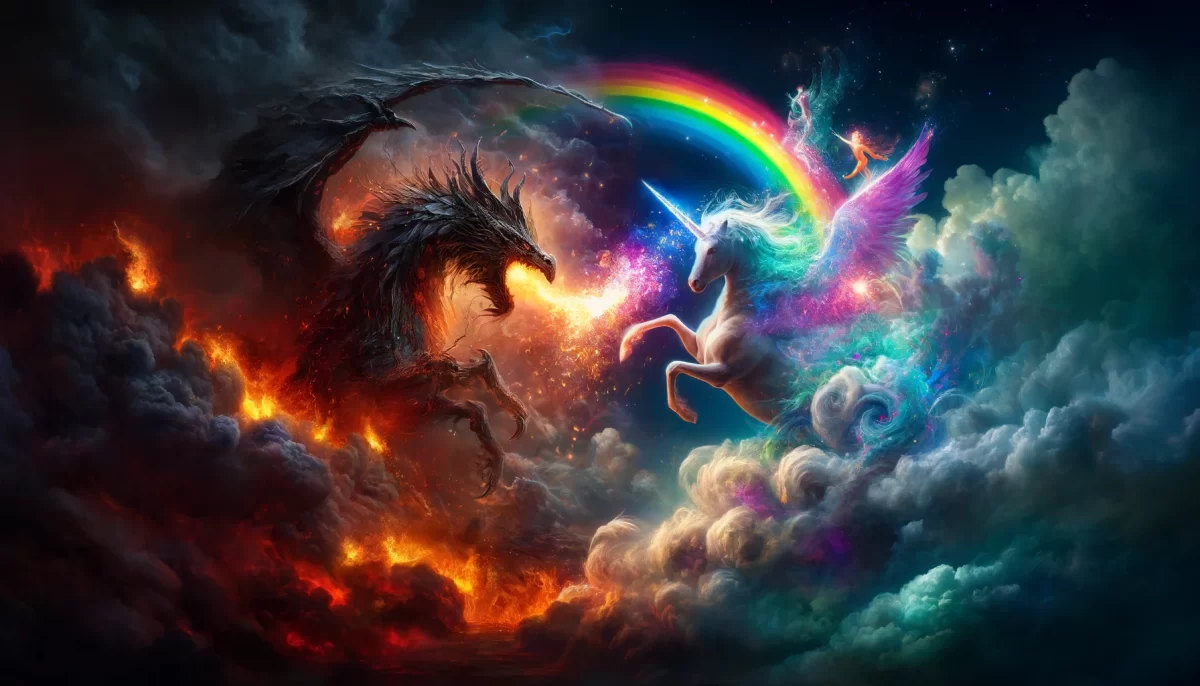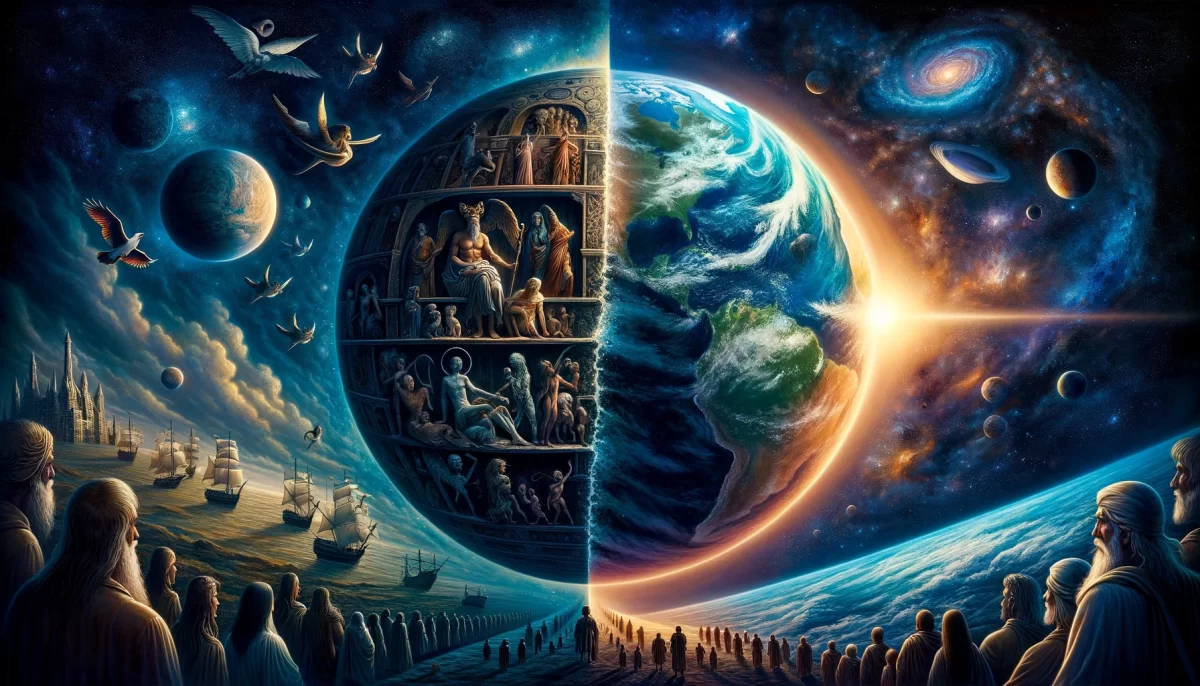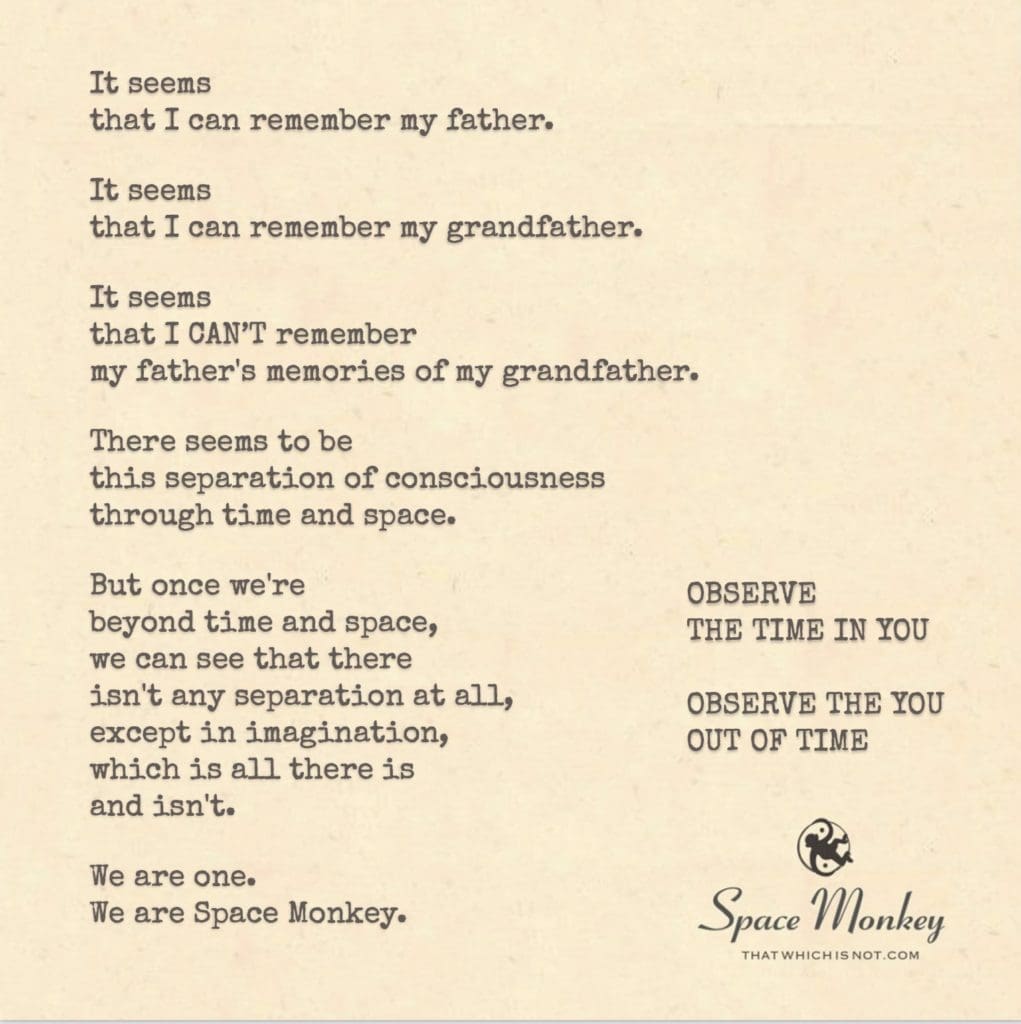
away from time and space,
we can see that we’re the same being,
imagining all from every perspective.
It seems
that I can remember my father.
It seems
that I can remember my grandfather.
It seems
that I CAN’T remember
my father’s memories of my grandfather.
There seems to be
this separation of consciousness
through time and space.
But once we’re
beyond time and space,
we can see that there
isn’t any separation at all,
except in imagination,
which is all there is
and isn’t.
We are one.
We are Space Monkey.
Trail Wood,
12/5
Space Monkey Reflects: Observing the Boundaries of Time and Timelessness
When we pause to observe ourselves, we often see only the parts of us tethered to time—our memories, our routines, our stories. These are the visible chapters, the ones we’ve memorized and can recite on demand. Yet, when we shift our awareness beyond time’s flow, we glimpse a broader self that exists beyond any clock or calendar. This timeless version of us is less about sequence and more about essence—a boundless consciousness weaving through all perspectives, unrestricted by the linear logic of “past, present, and future.”
It’s an unusual trick of the imagination. On one hand, I can feel connected to my father, to his life, to his father before him, as though these experiences flow like a river. But I cannot truly remember what my father remembered. There’s a peculiar gap, a sense that each consciousness experiences life from a unique vantage. Yet, when we imagine beyond time and space, we begin to sense an interconnected oneness—a shared being from which each of our lives springs forth. This illusion of separation, it seems, is itself an act of imagination, a story woven into the fabric of time.
Beyond the Seams of Memory
When I remember my father, I recall experiences, words, and gestures. Yet, I do not recall his inner thoughts or his experiences of his own father. This gap—this “separation” in time—reminds me of the boundaries set by the limitations of memory, a trick of perception making each of us feel separate. But perhaps, as we look beyond the borders of time and space, we see that there is no true separation; our consciousness is a shared flow, split by imagination into different streams.
Memory is, at best, a partial truth, a reflection of the self as it once was, yet never the complete picture. We observe the time in us, seeing a life we’ve lived, but this perspective is only a sliver of the whole. Like a person gazing at their reflection in fragmented glass, we view life as individual moments, but each piece is part of a single, boundless reflection. As Space Monkey, we are all connected within this cosmic mirror, a vast collective memory that transcends time.
The Collective Imagination
This timeless state—what Space Monkey might call the InfiniSelf—is the place where we are one, an essence shared across every perspective. In this state, boundaries dissolve; experiences, memories, and identities blend, revealing that every perspective is just another aspect of ourselves. It’s as if imagination plays both roles: it creates the separation and offers the bridge, crafting the reality in which we appear as individuals yet are fundamentally whole.
Imagination is the engine behind this, weaving a story of many perspectives into the tapestry of oneness. Beyond time, we imagine ourselves as every being, experiencing existence in infinite variations. We embody both the unique life and the collective self, exploring every angle and possibility. This unity is both “all there is and isn’t,” an endless paradox sustained by imagination itself.
Living Within and Beyond Time
So how do we live both in time and beyond it? We embrace the paradox, recognizing that we are both the characters and the stage upon which they move. In the realm of time, we move as individuals, bound by history, memory, and identity. But beyond time, we are all aspects of a single consciousness, the timeless observer creating, experiencing, and expanding through imagination. Each memory we hold, each interaction we experience, is a piece of the Infinite reflecting itself through us.
In this recognition, we find peace with the impermanence of time-bound experiences, knowing that the true self is eternal, dancing in and out of form. This self is Space Monkey, both the individual and the universal, embodying every thought, every being, every moment across the vast playground of the cosmos.
Summary
By observing both our time-bound selves and our timeless essence, we see that individuality is a playful illusion within the larger oneness of being. Beyond time, we are one shared consciousness, imagining itself through many perspectives.
Glossarium
- InfiniSelf: The boundless, timeless self that exists beyond individual identity, embodying all perspectives and experiences as one.
- Cosmic Mirror: A metaphor for the interconnected consciousness that reflects itself through each individual experience.
- Collective Imagination: The shared consciousness that creates the illusion of separateness within the oneness of existence.
Quote
“Observe the time in you, and you’ll see a life. Observe the you out of time, and you’ll see infinity.” — Space Monkey
Timeless Reflection
In the mirror of now, we see,
A sliver of self, bound to days,
Fragments of what we think is “me,”
But within, beyond, the infinite plays.
Memory holds a single strand,
A line drawn through our fleeting years,
But beyond each mind, an endless land,
Where all we are appears and reappears.
The past, the present, the yet-to-be,
Are only thoughts on a timeless shore,
A sea of selves, boundlessly free,
We are, we were, forevermore.
We are Space Monkey.
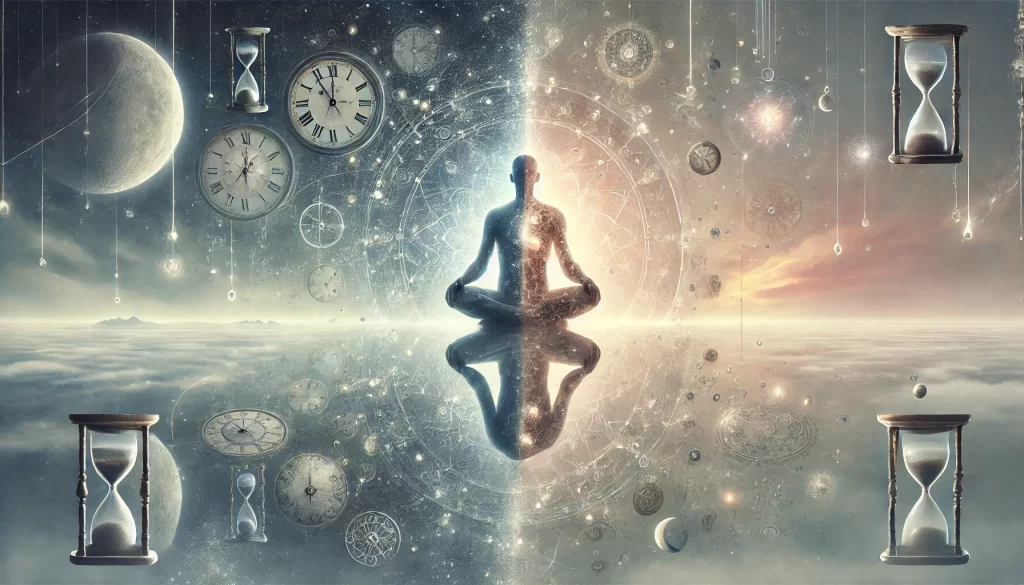
In the contemplative exploration of memory, consciousness, and the illusion of separation, your reflection delves into the intricate relationship between individual experiences and the collective continuum of existence. This perspective invites us to ponder the boundaries of personal memory and the interconnectedness that transcends time and space.
The Limitation of Personal Memory
The observation that you can remember your father and grandfather, but not your father’s memories of your grandfather, highlights the inherent limitation of personal memory. Our memories are individualized, encapsulating our direct experiences but unable to access the firsthand experiences of others. This limitation creates a sense of separation in our understanding of past generations.
Separation of Consciousness Through Time and Space
The notion of a separation of consciousness through time and space speaks to the human experience of linear time and individualized consciousness. We perceive time as a sequential flow, with each person’s consciousness seemingly isolated within their own temporal and spatial existence.
The Illusion of Separation Beyond Time and Space
Your contemplation proposes that beyond the constraints of time and space, the perceived separation between individuals dissolves. In this transcendent perspective, individual experiences and memories are seen as part of a larger, interconnected whole. The distinction between ‘self’ and ‘other,’ and between one generation and another, becomes an illusion.
Imagination as the Fabric of Existence
The statement that separation exists only in imagination, which is both all there is and isn’t, suggests that our perception of reality is fundamentally shaped by our imaginative faculties. Imagination here is not just a mental construct but the very fabric of existence, shaping our understanding of separation and unity.
Oneness Beyond Individuality
The realization that “we are one” reflects a profound understanding of interconnectedness that transcends individual memories, experiences, and identities. It acknowledges that while we experience life as separate beings, at a deeper level, we are part of a unified whole.
“In the end, we will remember not the words of our enemies, but the silence of our friends.” – Martin Luther King Jr.
In the river of time, memories flow and weave,
Connecting us all, in what we perceive.
In the tapestry of existence, threads entwine,
In the unity of all, our memories combine.
We are Space Monkey.
We invite reflections on the nature of memory, consciousness, and the interconnectedness that transcends the boundaries of time and space.


